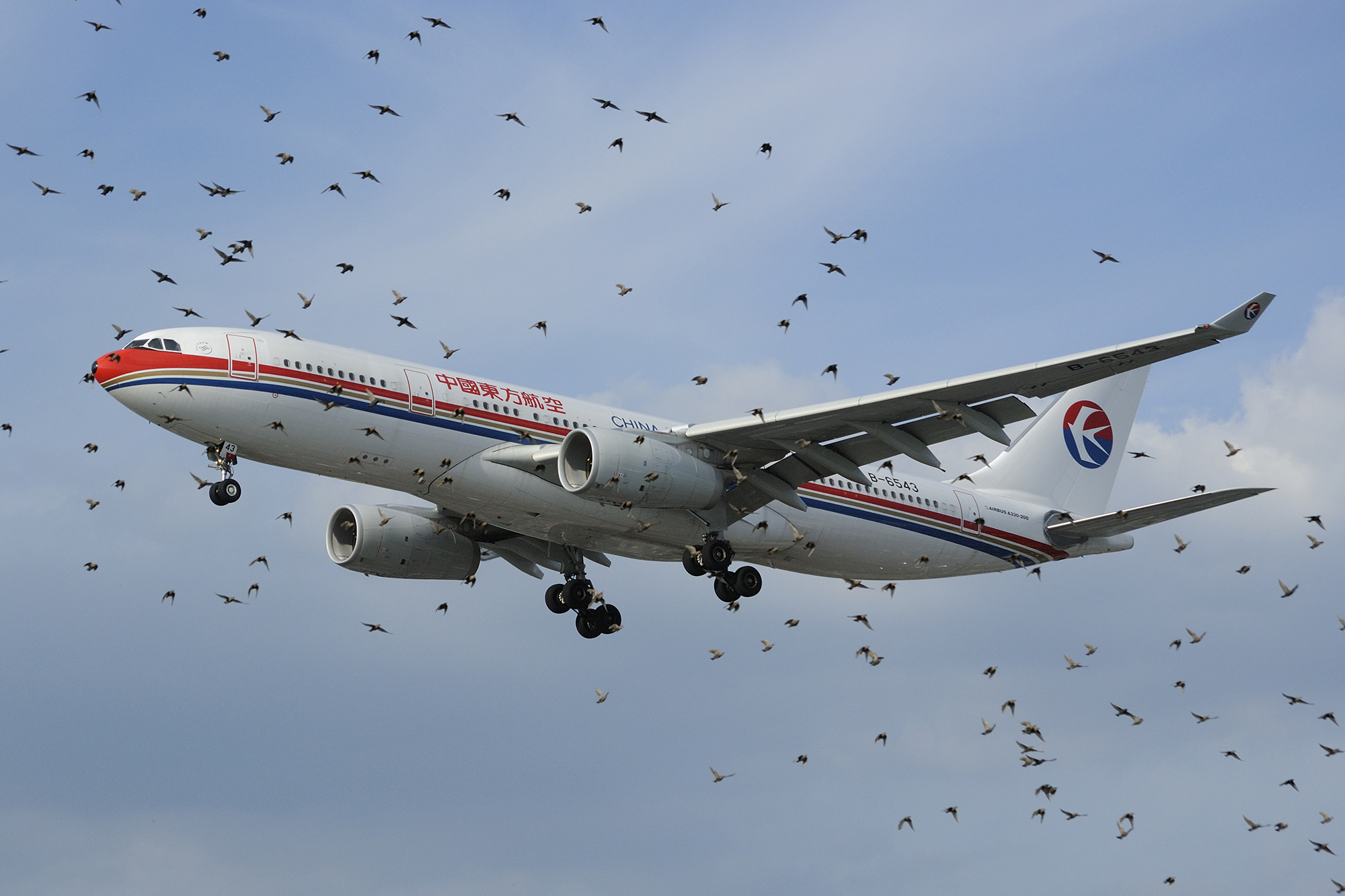Every year, thousands of birds collide with aircraft. Delft researchers have developed a simulation programme that could help reduce the risks of collisions.
Strikes are especially dangerous shortly after take-off. (Photo: Wikipedia)
Around one in every 1,400 airplanes that lands at or takes off from Schiphol Airport collides with a bird (data from 2012, Schiphol). This sometimes seriously damages the planes. Geese in particular pose a danger. A Royal Air Maroc airplane that collided with a flock of geese in 2010 suffered engine failure and had to make an emergency landing.
Dr Jacco Hoekstra of the Control and Simulation (Faculty of Aerospace Engineering) section believes he is on to something. What air traffic control needs is a simple decision tool that translates information on bird flocks into something as simple as traffic lights: a green and red light that they can use to give clearance for take-off.
Radar systems
Most airports, including Schiphol, have radar systems to detect flocks of birds. But unless the flocks detected pose an exceptionally high risk to aircraft and justify a complete temporary halt on flying, the information is usually not disseminated to air traffic control or pilots.
“Air traffic control and pilots are reluctant to be actively involved in operational bird strike prevention because of an anticipated increase in workload based on such uncertain and complex information,” says Hoekstra. According to him a more simple decision tool, such as a stoplight, could be of help.
‘Strikes are especially dangerous shortly after take-off’
The Delft scientist and colleagues, amongst whom are researchers at the German Aerospace Center and the Royal Netherlands Airforce, started off by analysing data from two Dutch radars, one at Eindhoven airport specialised in detecting birds, and the weather radar located in De Bilt. Combined they generated information about bird density, the average directions and the birds’ velocities. Their study, Simulation Model to Calculate Bird-Aircraft Collisions and Near Misses in the Airport Vicinity, was published last month in the journal Aerospace.
Algorithms
In ongoing research, the scientists want to add algorithms to the simulation environment that can evaluate the effects on an airport’s runway capacity and safety when air traffic is delayed in the case of a predicted bird strike. These algorithms can help make a trade-off between the predicted safety gain associated with a short delay and the costs associated with the postponed take-off, or so is the idea. If it turns out that the effects on the safety and capacity can indeed be predicted, then this trade-off could be translated to an overall score: green that take-off is okay and red that take-off should be postponed.
“The majority of bird strikes occur at altitudes below one kilometre and therefore during departure or approach,” says Hoekstra. “If an airplane is hit during landing and has engine problems, it can normally glide its way safely to the landing strip. It has enough speed to do so. Strikes are especially dangerous shortly after take-off.”
The International Civil Aviation Organization (ICAO) requires airports to maintain a wildlife strike prevention programme. Research shows that the resulting mitigation measures, such as chasing the birds away or capturing and killing them, have reduced the risk of bird strikes at airports. However, in the area adjacent to the airport, where approaching and departing aircraft also fly below an altitude of a kilometre, the options to reduce the bird strikes are still limited. It is especially for this area that the stoplights could prove to be life saving.



Comments are closed.